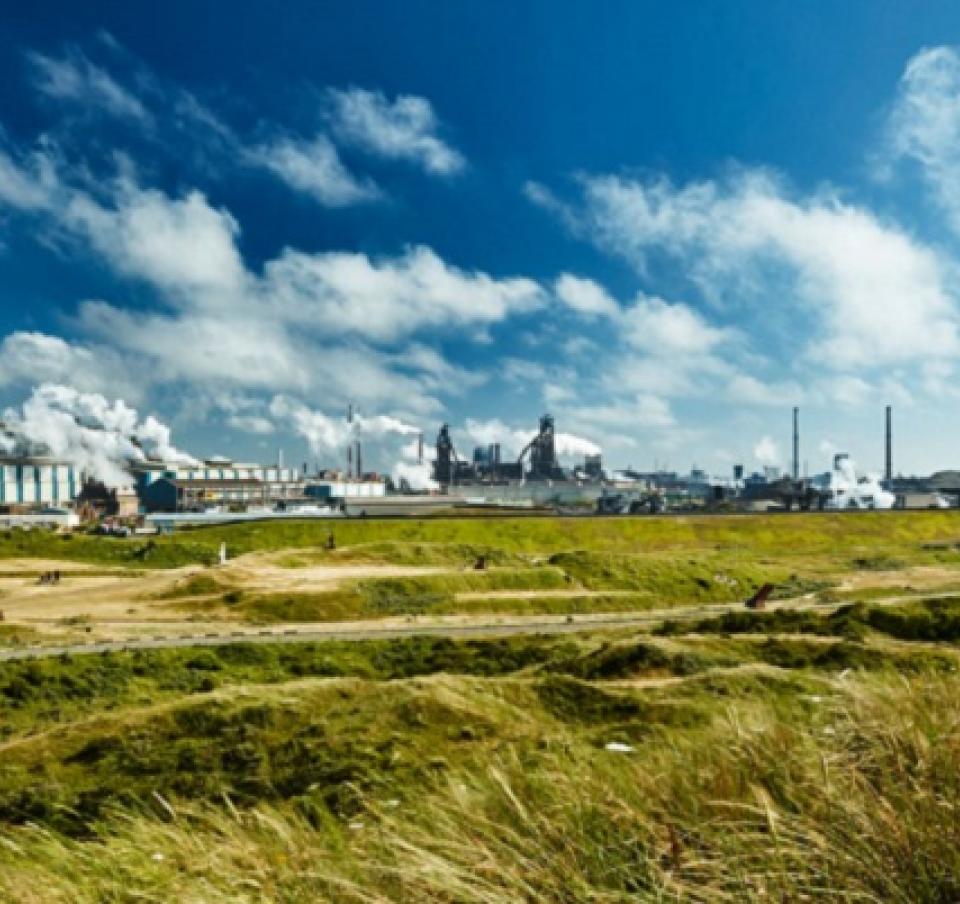Tata Steel’s European business has announced a partnership with leading chemicals company Nouryon and the Port of Amsterdam to develop the largest green hydrogen cluster in Europe.
The announcement is one of a number of initiatives to help Tata Steel’s European business achieve its ambition of becoming carbon neutral from 2050.
The companies will together explore the feasibility of a water electrolysis facility to produce hydrogen and oxygen at Tata Steel’s IJmuiden steelworks in the Netherlands. Using renewable electricity, the plant would save up to 350,000 tonnes of CO2 per year, equivalent to the emissions of more than 40,000 homes.
Hydrogen is a vital element which serves the dual purpose of being a carbon alternative for the steelmaking industry while also being used to help create everyday household products from the waste gases produced during steelmaking.
Hans Fischer, CEO of Tata Steel’s European business, said: “We are already one of the world’s most CO2-efficient steel companies, but our ambition is to become a carbon-neutral steelmaker.
“The steelmaking industry has a collective responsibility to set bold targets, raise the bar and find opportunities to collaborate in order to drive progress on this front. Simultaneously, we’re making significant investments in innovation as part of our strategy to build a European business that is sustainable in every sense.”
Last month, Tata Steel announced that HIsarna, the company’s ground-breaking new reactor, had exceeded expectations in sustainable steel production, with the possibility of achieving a CO2 reduction of more than 50%. HIsarna is expected to play a pivotal role in meeting the recycling ambitions of the circular economy.
Also announced recently was Tata Steel’s intention to cooperate with Dow Chemical on a pilot project which seeks to convert carbon monoxide – a by-product gas from blast furnaces – into naphtha, a liquid hydrocarbon mixture. The naphtha is expected to be used as feedstock for the production of other chemical products, another example of integration into the circular economy.
-ends-
For further information: Damien Brook on +44 (0)7818 588 545 or damien.brook@tatasteeleurope.com
About Tata Steel’s European operations
Tata Steel is one of Europe's leading steel producers, with steelmaking in the Netherlands and the UK, and manufacturing plants across Europe. The company supplies high-quality steel products to the most demanding markets, including construction and infrastructure, automotive, packaging and engineering. Tata Steel works with customers to develop new steel products which give them a competitive edge. The combined Tata Steel group is one of the top global steel companies, with an annual crude steel capacity of 27.5 million tonnes and more than 65,000 employees across five continents. The group’s turnover in the year ending March 2018 was US $20.4 billion.
Notes to editors:
What is our ambition?
Carbon neutral steelmaking
The most common technology to produce steel starts with iron making in a blast furnace. Iron ore and coal are brought together, leading to a chemical reaction that produces raw iron and CO2. In a steel plant, impurities are removed from the raw iron, and alloying elements are added to produce different grades of steel.
Long term, the solution to carbon-neutral steelmaking lies in using hydrogen (H2) instead of coal to produce steel. The chemical reaction would then produce H2O (water) as a by-product rather than CO2.
However, hydrogen from renewable sources is in short supply and it will take a long time before the technology to produce steel with hydrogen becomes available.
Another possibility is to use steel scrap. Today, we are already a major recycler of steel, using around 20% steel scrap in our steelmaking process.
Recycling steel saves energy and resources. Steel is the most recycled material in the world and it is fair to say that all steel that you see around you either has been recycled or will be recycled. But there is simply not enough steel scrap available to cater to the still-growing demand for new steel.
So how will we reduce our emissions in the short- and mid-term, and how will we ultimately achieve our ambition to become a carbon-neutral steelmaker?
Our vision is to develop breakthrough technologies that power our future. We will develop and nurture innovations that have the potential to change the way steel is produced.
Together we make the difference
Today’s technologies have reached the limit of being able to achieve further large CO2 reductions. A new vision is required. One in which groundbreaking innovations are proposed. Where innovative production processes and clean energy sources to power our future are developed. And where partners from across industry and government work together to drive the circular economy.
We envisage:
- Turning waste gases from steel production into valuable raw materials for the chemicals industry and creating options to connect to a future carbon storage infrastructure.
- Developing breakthrough technologies for steelmaking that help us to significantly reduce our CO2
- Playing a pivotal role in kick-starting the hydrogen economy.
- Championing technologies that lead to carbon neutral steelmaking.
A portfolio of innovations to continuously reduce our CO2 emissions
Redefine blast furnace route to become low carbon
Our blast furnaces have a lot of potential:
- Turning waste gases from steel production into valuable raw materials for the chemicals industry, and creating options to connect to a transitional carbon-storage infrastructure.
- Using biomass to reduce CO2
HIsarna, a new way of making steel
A breakthrough steelmaking technology that we are currently developing, HIsarna has a number of key advantages over today’s processes:
- It reduces carbon emissions by 20% to 80% (when combined with CCS).
- It releases significantly less NOx, SOx and fine dust.
- It allows for more steel scrap to be recycled, up to 50%.
- It enables zinc to be recovered when recycling galvanized steel.




































































































































































































































